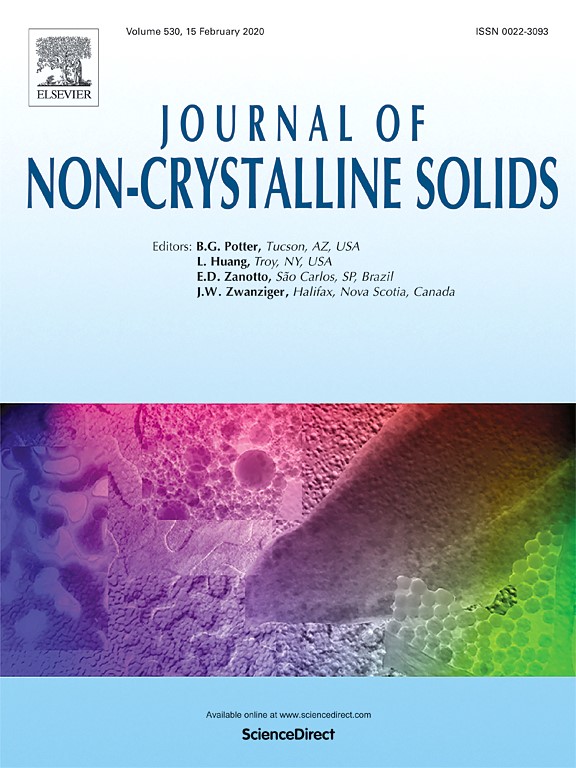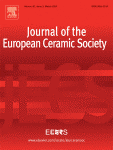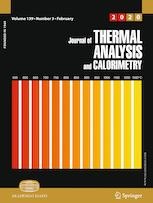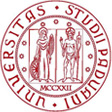New FunGlass scientific papers were published in peer-reviewed journals
We would like to draw your attention to the new papers of our researchers presenting their research results achieved in collaboration with the colleagues from FunGlass partners´ institutions. The papers were published in peer-reviewed and highly cited journals as Journal of Non-Crystalline Solids, Journal of Thermal Analysis and Calorimetry, Journal of the European Ceramic Society and Materials.
Congratulations to:
 H. Elsayed – A. R. Romero – M. Picicco –J. Kraxner – D. Galusek– P. Colombo – E. Bernardo:Glass-ceramic foams and reticulated scaffolds by sinter-crystallization of a hardystonite glass. In: Journal of Non-Crystalline Solids, Vol 528, 119744, 2020.
H. Elsayed – A. R. Romero – M. Picicco –J. Kraxner – D. Galusek– P. Colombo – E. Bernardo:Glass-ceramic foams and reticulated scaffolds by sinter-crystallization of a hardystonite glass. In: Journal of Non-Crystalline Solids, Vol 528, 119744, 2020.
Abstract: In the present investigation, we focused on a glass-based route to hardystonite ceramics, which represent one of the most promising classes of biomaterials, in the form of highly porous scaffolds. A glass corresponding to the stoichiometry of a hardystonite solid solution (Ca2Zn0.85Mg0.15Si2O7) was first synthesized and reduced in the form of fine powders (<40 μm). Highly crystallized samples were obtained by sinter-crystallization, in air, at 1000–1200°C, starting from highly porous green bodies (porosity >70 vol%), obtained by direct foaming or stereolithography of specifically formulated suspensions. More precisely, foams were obtained by intensive mechanical stirring (with the help of a surfactant) of suspensions undergoing gelation, in weakly alkaline aqueous solutions. Reticulated structures with complex non-stochastic geometry, on the other hand, were obtained by digital light processing of glass powders suspended in a photosensitive organic binder. The intensive crystallization caused an excellent retention of the shapes generated at room temperature. The uniform microstructures, all comprising quite dense struts, favored the mechanical properties (with crushing strength well exceeding 2 MPa, with open porosity above 65 vol%).
 Prnová –J. Valúchová– M. Parchovianský– W. Wisniewski – P. Švančárek–R. Klement– Ľ. Hric – E. Bruneel – D. Galusek: Y3Al5O12-α-Al2O3 composites with fine-grained microstructure by hot pressing of Al2O3-Y2O3 glass microspheres.In: Journal of the European Ceramic Society. Vol 40, Issue 3, March 2020, Pages 852-860.
Prnová –J. Valúchová– M. Parchovianský– W. Wisniewski – P. Švančárek–R. Klement– Ľ. Hric – E. Bruneel – D. Galusek: Y3Al5O12-α-Al2O3 composites with fine-grained microstructure by hot pressing of Al2O3-Y2O3 glass microspheres.In: Journal of the European Ceramic Society. Vol 40, Issue 3, March 2020, Pages 852-860.
Abstract: Yttrium aluminate glass microspheres with the eutectic composition 76.8 mol. % Al2O3 and 23.2 mol. % Y2O3 were prepared by combining the sol-gel Pechini method with flame synthesis. The sol-gel method was applied to achieve the desired composition homogeneity of the prepared glass and hence, improve the microstructure homogeneity and mechanical properties of bulk polycrystalline materials. The latter were prepared by hot pressing, more specifically pressure assisted sintering, at 1050 °C, 1300 °C and 1600 °C using pressures of 30 MPa and 80 MPa and holding times between 0 and 30 min. This also led to the crystallization of the glass. A composite with the Vickers hardness 18.0 ± 0.7 GPa and an indentation fracture toughness 4.9 ± 0.3 MPa.m1/2 was obtained by sintering at 1600 °C, at the pressure of 80 MPa and with 30 min isothermal heating at the maximum temperature. Improved mechanical properties were observed when increasing the temperature of sintering and the holding time. This can be attributed to the formation of a unique microstructure consisting of α-Al2O3 grains in the μm-scale embedded in a YAG (yttrium-aluminium garnet) matrix in the hot-pressed samples.
 M. Majerová –A. Prnová–A. Plško –P. Švančárek–J. Valúchová–R. Klement–D. Galusek: Crystallization kinetics of gehlenite glass microspheres. In: Journal of Thermal Analysis and Calorimetry. Volume 139, Issue 1, January 2020.
M. Majerová –A. Prnová–A. Plško –P. Švančárek–J. Valúchová–R. Klement–D. Galusek: Crystallization kinetics of gehlenite glass microspheres. In: Journal of Thermal Analysis and Calorimetry. Volume 139, Issue 1, January 2020.
Abstract: The glass of gehlenite composition was prepared by flame synthesis in the form of microspheres. The powder precursor was synthesised by standard solid-state reaction method using SiO2, Al2O3 and CaCO3. The prepared glasses were characterized from the point of view of surface morphology, phase composition and thermal properties by optical microscopy, scanning electron microscopy (SEM), X-ray diffraction (XRD) and differential scanning calorimetry (DSC), respectively. The prepared samples contained only completely re-melted spherical particles. SEM did not reveal any features indicating the presence of crystalline phases. However, traces of crystalline gehlenite were detected by XRD. The high-temperature XRD measurements (HT XRD) were carried out to identify the phase evolution during glass crystallization. In the studied temperature range, gehlenite phase was identified as the main crystalline phase. Non-isothermal DSC analysis of prepared glass microspheres was carried out from room temperature up to 1200 °C at five different heating rates: 2, 4, 6, 8 and 10 °C/min to determine the thermal properties of microspheres. In order to study the crystallization kinetics, the DSC curves were transformed into dependence of fractional extent of crystallization (α) on temperature. The Johnson–Mehl–Avrami–Kolmogorov model was found to be suitable for description of crystallization kinetics. Frequency factor A = 5.56 × 1029 ± 1.73 × 1029 min−1, apparent activation energy Eapp = 722 ± 3 kJ mol−1 and the Avrami coefficient m = 2 were determined. In the studied system, the linear temperature dependence of nucleation rate, diffusion controlled crystal growth interface and a 2D crystal growth were confirmed.
 A.Talimian – V. Pouchly – K. Maca – D. Galusek: Densification of Magnesium Aluminate Spinel Using Manganese and Cobalt Fluoride as Sintering Aids. In: Materials, 2020, 13(1), 102.
A.Talimian – V. Pouchly – K. Maca – D. Galusek: Densification of Magnesium Aluminate Spinel Using Manganese and Cobalt Fluoride as Sintering Aids. In: Materials, 2020, 13(1), 102.
Abstract: Highly dense magnesium aluminate spinel bodies are usually fabricated using pressure-assisted methods, such as spark plasma sintering (SPS), in the presence of lithium fluoride as a sintering aid. The present work investigates whether the addition of transition metal fluorides promotes the sintering of MgAl2O4 bodies during SPS. At the same time, such fluorides can act as a source of optically active dopants. A commercial MgAl2O4 was mixed with 0.5 wt% of LiF, MnF2, and CoF2 and, afterwards, consolidated using SPS at 1400 _C. Although MnF2 and CoF2 promote the densification as effectively as LiF, they cause significant grain growth.












